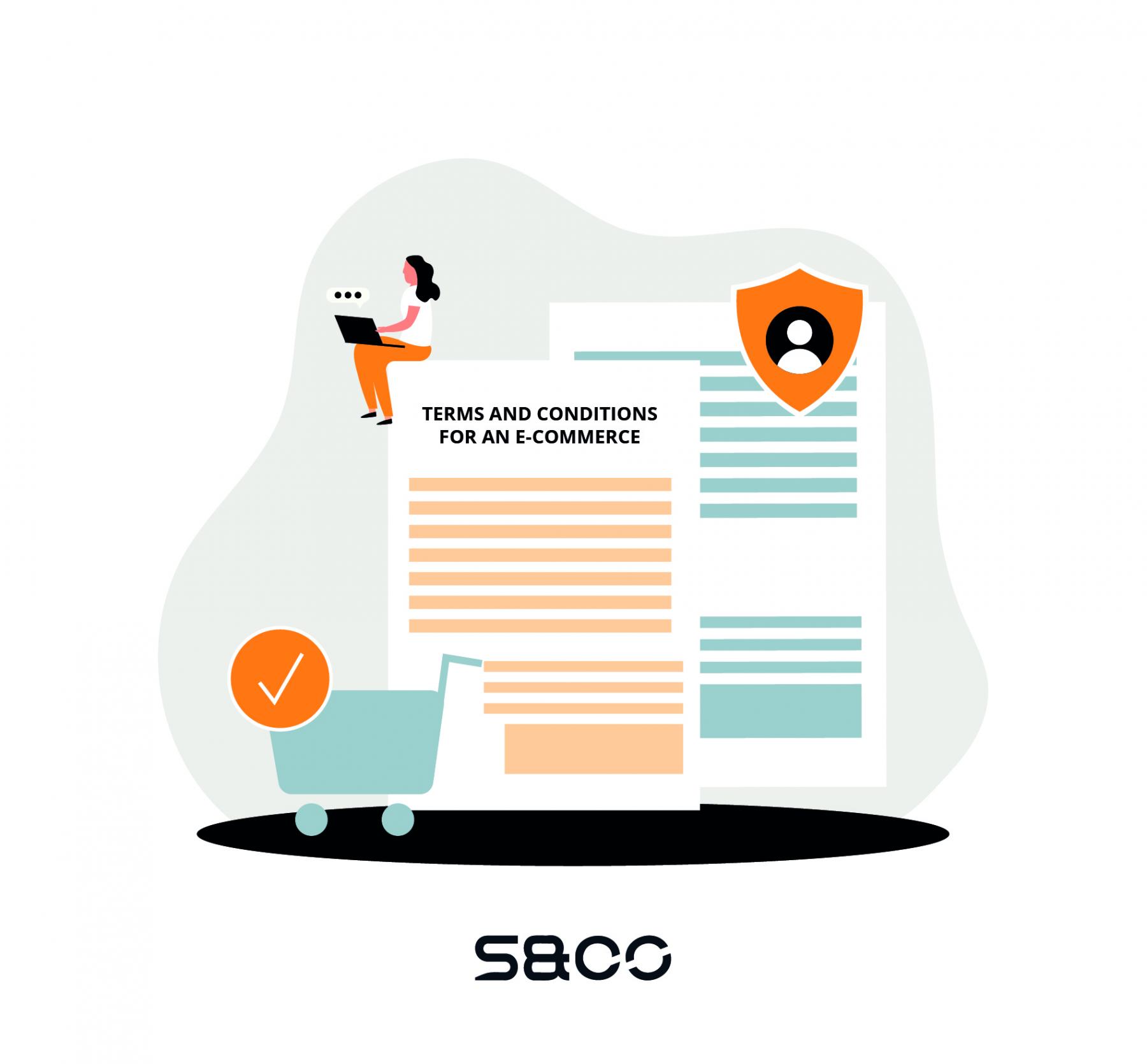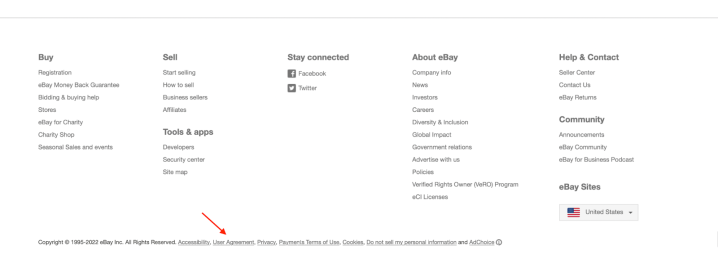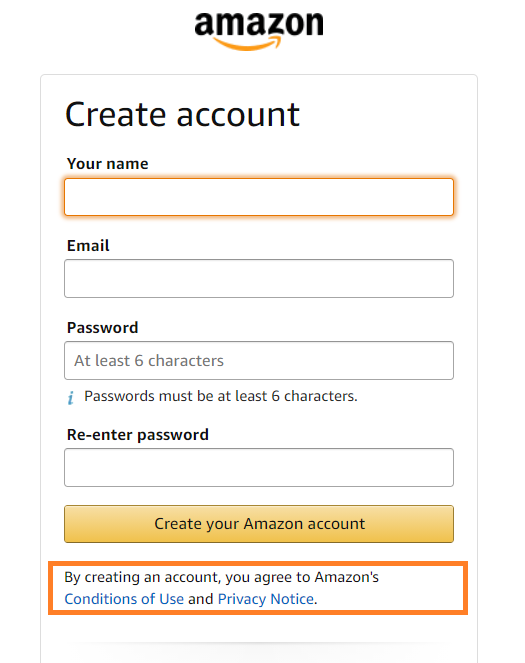Interactions between a customer and a website are regulated by Terms and Conditions. ProPrivacy.com found that only 1 percent of users actually read this document. Notwithstanding this fact, businesses still need to publish Terms and Conditions on their website. In this article our E-Commerce lawyer explains how to create Terms and conditions for websites and why it is crucial to draw up and publish this document.
What are website Terms and Conditions?
The Terms & Conditions are an agreement between a customer and an Ecommerce business owner. This document can have different names: User agreement, Public offer, Terms of use, Terms of service, and others. No matter what name is chosen the nature of an agreement remains the same: a website offers rules, and a user accepts without being able to change them. The Terms & Conditions are placed on websites of online stores, marketplaces and other Ecommerce types of businesses whose purpose is to provide a platform to exchange goods and services. To create effective Terms & Conditions, you should take into consideration the differences between types of businesses, especially online stores and marketplaces. Online stores, which sell directly to consumers, are responsible for the quality of goods, whereas a marketplace is an intermediary platform, which is responsible for the placement and distribution of products and content, but not for the quality of goods. These differences result in significant changes to the clauses of the Terms & Conditions.
The following article is about the writing of Terms & Conditions for websites, developed for Ecommerce business purposes. If you are interested in information about Terms & Conditions for other types of websites and mobile apps, read it here.

Why do you need Terms & Conditions?
IT-lawyers identified 5 reasons for putting an agreement on your website.
- To connect a website to a payment system.
- To justify a source of income.
- To protect copyrights.
- To explain the rules of interaction and describe potential violations of the Terms & Conditions.
- To set up disclaimers.
We'll explain the details below.
Connection to a payment system
Most payment systems require Terms & Conditions to be placed on a website prior to connecting them. For example, PayPal and GooglePay include this requirement in their policy, so you’ll need to draw up Terms & Conditions before you can connect these payment systems to your site.
To be compliant with payment systems requirements, our attorneys advise that Terms & Conditions must describe a user's path from the beginning of a search to the purchase of a product. To do this we suggest that you include information about:
- Purchasing procedures. What procedures are established on the site that allows users to purchase products? At what point is the customer’s identification verified?
- Terms of payment. How is a purchase verified in the cart?
- Delivery conditions. Who pays for delivery? When is delivery paid?
- Refund terms. What are the terms and procedure for refunds?
For example, Overstock, an American online furniture retailer, implemented a three-level purchase verification system. Overstock asks users to confirm the purchase three times: first, the users click on “Buy” on the product page, second, they click on “Checkout” in the cart, and finally, they are asked to fill in payment information to verify the purchase. Such a procedure prevents hidden payment in one click and automatic funds deduction prohibited by payment systems. Creating a detailed payment procedures section within your Terms & Conditions document is a purchase safety guarantee and essential for maintaining the viability of your ecommerce platform.
Justifying a source of income
To confirm and declare the income and withdraw funds from a bank account, Terms & Conditions is submitted to tax authorities and banks to explain the legality of the funds originating in accounts of a sole proprietorship, LLC or other form of business. To use Terms & Conditions on these purposes you need to describe what an online store or marketplace is engaged in and who owns it.
Copyrights protection
Terms & Conditions is an instrument to inform a user that copying and using content is prohibited.
In order to meet the requirements of your business, it is crucial to consider the difference between the copyright of an online store and a marketplace, and draw up clauses in Terms & Conditions based on these differences.
The online store intellectual property rights belong to an owner of a website. Terms & Conditions include clauses to prohibit all text content, images, videos, design elements, software code, trademark and other intellectual property objects. At the same time an owner of a website is responsible for the infringement of third parties copyrights. For example, if an image was published on a website without author permission, the owner of a website would be responsible for this.
A marketplace owner has intellectual property rights on a website and branded elements, but the main content such as text, photos, videos are posted by users through their personal accounts, and the intellectual property rights on these objects belong to them. A marketplace owner takes permission to promote and distribute content from the user. In Terms & Conditions it is important to distinguish which intellectual property objects belong to a marketplace and which belong to a user who promotes the product on a marketplace website.
To make it clear, there are some examples of intellectual property protection provisions in marketplaces' Terms & Conditions.
Rules of interaction and prevention of abuse
The Terms & Conditions task is to describe rules of a site usage and provide information about how users can register on a website, create personal accounts, add content, get service support, and other aspects of interactions with a website.
One more advice for marketplaces, don't forget to provide rules for setting up ads for products and services, as users' experience can be negatively affected by misleading promotions or spammy content. Marketplaces counteract commercial intermediaries who offer users promotional assistance. Such pseudo-marketers receive commissions and are monetized at the expense of the marketplace. That is, they use the marketplace for commercial purposes without the owner's permission. Intermediaries create bots and generate untrue comments to improve the customer's rating. But such actions are violations, so Terms & Conditions shall stipulate responsibility for them.
But there are positive examples of commercial intermediation such as referral programs. In Revolut Terms & Conditions it is written that users receive bonuses for attracting new clients. If you decide to implement a referral program, the legal conditions of it should be stipulated in the document on a website.
Terms & Conditions should take into account the specifics of your business to protect you from risks and financial losses. For example, in 2024, Camelot UK Lotteries avoided a £1,000,000 loss thanks to a well-drafted Terms & Conditions.
Camelot's lottery system automatically displays winning information on the screen. However, due to an algorithm error, one player saw a message indicating they had won £1,000,000, when in reality, the system had recorded a win of only £10.
This posed a serious threat to the company. How do you respond when a player sees one result on the screen, but the official system records something different? How do you explain this to the user when the display suggests otherwise? Such a situation could have led to numerous lawsuits and massive financial losses.
The company was saved by the clear terms outlined in its Terms & Conditions, which every player agrees to upon registration and participation. The terms explicitly stated that the official result is the one stored in the system, not what appears on the screen. The court accepted this argument and ruled that the claim for £1,000,000 had no legal basis.
This case serves as a great example of why having well-crafted Terms & Conditions is crucial in the Ecommerce industry.
Disclaimers
Drawing up disclaimers online stores and marketplaces can limit their responsibility and notify customers about it. There are two types of disclaimers such as warranty disclaimers, which state what a website does and does not promise to users, and limitation of liability disclaimers, which specifies the extent of Ecommerce business owner responsibilities and obligations. Below you can find some necessary disclaimers descriptions.
For a marketplace it is important to delineate responsibility for the quality of a merchandise, because it does not provide direct sales and this is a website where other suppliers place goods, so the last are responsible for quality and arrange delivery.
When writing disclaimers, take into consideration state law and last court practice.
In August 2020, a California state appellate court ruled that Amazon is liable for injuries from the bought laptop battery, which burst into flames while the customer balanced the laptop, resulting in severe burns to arms, legs and feet. The court took into consideration that Amazon stored and registered the product in their system, packed and shipped it in Amazon-branded packaging. The court also noted that Amazon’s business model encouraged consumers to interact directly with the marketplace rather than the third-party sellers. Amazon was “pivotal in bringing the product here to the consumer”, so it shall be liable for accident.
Considering the situation with Amazon, we suggest you add some clauses to Terms & Conditions to set up who is a seller and that third-party sellers retain title to their products. Moreover, you can directly warn customers that you do not inspect the products or provide a warranty regarding the products’ quality.
One more disclaimer, that shall be added to Terms & Conditions, limits liability for the accuracy of the data. This is especially relevant for marketplaces and online stores, when they are not a manufacturer of a product. You can write this clause in this way: all information, images, photographs and product descriptions on a website are exclusively informative. A product can be different from description, images and photographs on a website.
Terms & Conditions also shall stipulate the responsibility of banks and payment systems for transactions and processing of payment details. We recommend you to leave a link to the payment system policy to confirm this rule.
Where should you post Terms & Conditions on your website?
The best place for Terms & Conditions is where users can easily find it such as the “footer” of a website.

You should not hide the document in the wilds of the site. This advice is important for those who run an Ecommerce business in Europe and the United States.
In 2012, the U.S. Court of Appeals established the criterias that Terms & Conditions must meet:
- Terms & Conditions must be clear and conspicuous.
- Businesses must require a user to scroll to the end of the document and express explicit consent by clicking "I agree".
- Businesses must prohibit use of a website until a user has agreed to the terms;
- It is important to periodically ask to confirm the agreement once again.
If a website makes changes to Terms & Conditions, users need to be informed using a pop-up or placing the ad in a visible part of the site, and also mailing them.
This ensures that users remain aware of any updates to the terms and prevents disputes over whether they were properly informed.
In Nguyen v. Barnes & Noble, Inc., Barnes & Noble included an arbitration clause in its offer, meaning that any disputes with customers would be resolved through arbitration rather than in court. This could have helped the company save time and costs in handling legal issues.
However, the plaintiff, Nguyen, argued that the company had failed to properly notify him of this condition. He claimed that although he was required to agree to the offer before making a purchase, he was not made aware of its contents, including the arbitration clause that restricted his right to take legal action in court.
The court ruled in favor of Nguyen, emphasizing that for an offer to be legally binding, a user must explicitly agree to its terms. The court determined that simply posting the offer on the website without requiring active user confirmation (such as checking a box to indicate agreement) was not sufficient to enforce its terms.
One more suggestion that Terms & Conditions must be understandable. This document is a dialogue with users, which means that it is important to speak to them in clear language, to make the process of reading as comfortable as possible, but often authors violate this principle. Philip Portman checked how much time users should spend on reading Terms & Conditions of popular social networks, marketplaces, online banking and other products. TikTok users have to read 7,342 words and spend an hour. Instagram was the most customer-oriented, there are 2,997 words for reading which users need 23 minutes. All negative records were broken by Microsoft - 14,417 words and 111 minutes to read.
In addition to the time criterion, websites use complex vocabulary and long sentences. Kevin Litman-Navarro, in his study, compared the complexity of vocabulary in public documents with literary classics. It turned out to be easier for a user to perceive "A Brief History of Time" by Stephen Hawking than Facebook documents. To be closer and simplify the user's path, place Terms & Conditions in an accessible place, write the document in concise and clear language.
Types of public offers
Depending on where a public offer is placed and how consent to its terms is obtained, we distinguish two types: review and click.
eBay uses the review approach and provides for the following:
- You agree to be bound by all of the terms of User agreement when accessing or using services.
Signing up and accepting the terms on Bonanza is a little different, where it says:
- That by having an account on Bonanza, you agree to our Terms of Use.
For the European market, for example, shopping on Zalando requires you to create an account, and the registration also states that:
- By registering an account, you agree to our Terms of Use.
The second type is a "click". A user performs an active action to express consent. The advantage of this approach is that the consent is explicit and proving this fact is not a problem. Amazon uses the click approach.

What must be included in website Terms and Conditions?
There are 5 provisions that must be in every document.
- To connect the payment system, describe the purchase procedure, terms of payment, delivery and return.
- To confirm the income in the tax office you need to disclose the source of income and answer the question where the financial transactions are made, confirm the purchase and sale with a statement of the payment system.
Also, tax authorities pay attention to who owns a website and a domain, so such information must be reflected in the document. Before that, it is important to confirm by means of contracts with developers, designers and other contractors the intellectual property rights for the objects which an online store and marketplace use to make a profit (source code, design and others).
- To protect intellectual property, provide an explicit prohibition on copying and using content. We advise detailing the objects of copyright that are protected.
In marketplace Terms & Conditions, you need to differentiate the objects of intellectual property of a marketplace and sellers who post content on a website to sell goods.
- To regulate interaction with the user, specify the rights and obligations of an online store or marketplace and a user. The Terms & Conditions task is to provide instructions on how to use a website and take into account possible risks.
- To eliminate the risks of liability for the actions of third parties: describe the disclaimers for the reliability of data, the quality and speed of delivery services and payment systems.
Such provisions in the complex guarantee the solution of conflict situations and disputes with minimum time, expenses, and risk of litigation.
Need assistance from an E-Commerce Lawyer for your online business?
Drafting Terms & Conditions for an online store or marketplace often involves navigating industry standards, platform responsibilities, and recent legal developments. Our e-commerce lawyers contribute insights based on real cases and ongoing regulatory updates to help ensure your documents reflect current practices and business models.





